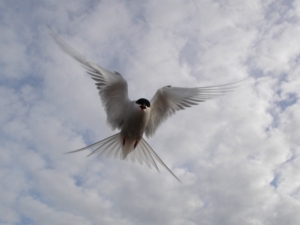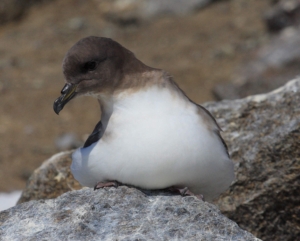Did you know that the Arctic tern flies between the Arctic and Antarctica?The Arctic tern flies all over the world. It nests in Svalbard and flies south to spend the “winter” in the pack ice of the Southern Ocean – where it is summer at the time.

Some parts of the population probably spend what we call winter in the waters off the coast of western and southern Africa. Of all birds, the Arctic tern holds the world record for long-distance migration. Arctic terns do not nest in Antarctica, but there are several bird species that do. Approximately 45 species of seabirds and penguins live in Antarctica but only a handful have adapted to the extreme climate farther inland on the Antarctic continent. Those few hardy species live at the limit of what is physiologically possible and must fly as much as 11 000 km to find food. Seabirds in Antarctica are closely tied to the marine environment and find all their sustenance in the sea. Many spend their entire lives at sea and visit land only to nest. In Antarctica, three groups of seabirds predominate: penguins (seven species), albatrosses (six species), and petrels (23 species). Penguins make up an entire 85% of the total body weight (biomass) of Antarctic seabirds. 
Thick layers of subdermal fat, masses of insulating down, and thick, impermeable plumage make it possible for seabirds to survive in Antarctica. The subdermal fat insulates, but is also an important energy reserve in times when there is little food. The nesting season in Antarctica lasts from the end of November to the end of February. The breeding cycle has evolved so that food availability will be optimal at the time when the chicks become independent from their parents. For many species, Antarctic krill is the most important prey. Data from Antarctic petrels fitted with satellite transmitters show that these birds can fly as much as 11 000 km in search of food. They fly over ice-covered waters several times more extensive than the Barents Sea. Foraging trips that long mean that the chick must be able to wait 2-3 weeks between feedings. Most Norwegian research on seabirds in Antarctica has been done at Svarthamaren in Dronning Maud Land or on Bouvetøya (Bouvet Island). Svarthamaren is a nunatak about 100 kilometres east of the Norwegian research station Troll, and 200 kilometres from the ice edge. It is home to the world’s largest known colony of Antarctic petrels. The colony numbers nearly 250 000 nesting pairs. In addition, many pairs of snow petrel and the predator South Polar skua nest in the same area. |
South Pole 1911–2011 is an informational outreach project run by the Norwegian Polar Institute
Contact person:


